Chapter 16
The Civil War: 1861–1865
By Boundless
The origins of the Civil War were rooted in the fundamentally different economic and social structures of the North and South.
The Battle of Fort Sumter was the first armed conflict of the Civil War.

The Battle of Bull Run, the first major battle of the Civil War, demonstrated to the public that the conflict would not be resolved quickly or easily.
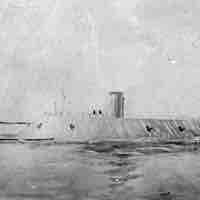
The naval actions of the Civil War revolved around the Union Navy's blockades of Confederate ports.

Both the Confederacy and Union formed massive, elaborately organized armies through volunteerism and conscription.
Both the Union and countries in Europe refused to recognize the Confederacy as a sovereign nation.
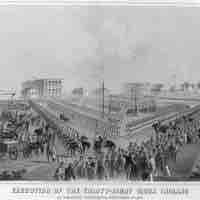
Western states and territories witnessed major military campaigns by Confederate and Union forces.
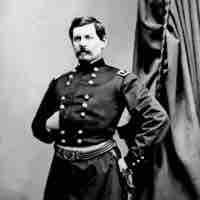
Union General George B. McClellan attempted to capture Richmond in the Peninsular Campaign, but numerous sieges forced his retreat.
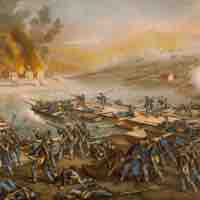
Fredericksburg was one of the most one-sided battles and the first instance of urban combat during the American Civil War.
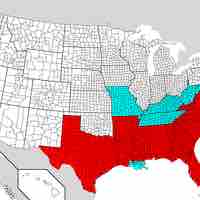
In 1863, President Lincoln issued the Emancipation Proclamation, an executive order that freed the slaves in the Confederate states.

African-American soldiers comprised 10 percent of the Union Army, with recruitment beginning following the Emancipation Proclamation in 1863.

"Contraband" was a term commonly used to describe an escaped slave during the Civil War.
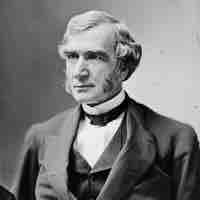
Republicans in Union Congress enacted national reforms. The Confederacy adopted its own constitution and formed its own government.
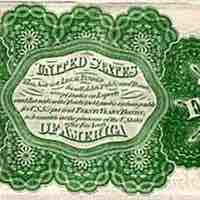
The Union emerged from the Civil War with a healthy economy by funding the war with new taxes, printing money, and issuing government bonds.
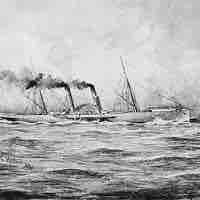
The Southern economy was crippled during the Civil War by a self-imposed cotton embargo, Union blockades, and inflation.
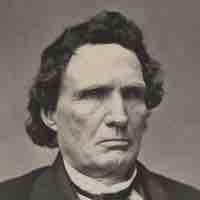
Republicans were split between those who sought peace within the Confederacy and those who wanted emancipation for slaves.
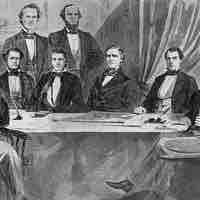
Confederate politics were dominated by the tension between states' rights and the military needs of the Confederacy.

The battles of the Civil War were fought between 1861 and 1865, with the most significant battles occurring in the western and eastern theaters.
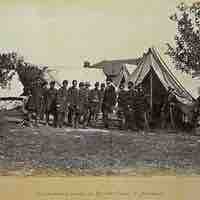
Many of the Civil War's most important and bloodiest battles occurred in the eastern theater between Washington, D.C., and Richmond.

During the Vicksburg Campaign, Union victory secured the important Mississippi River for the Union and was a turning point in the war.
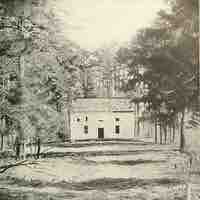
The Confederate Army won at the Battle of Chancellorsville, but lost many troops, including General "Stonewall" Jackson.
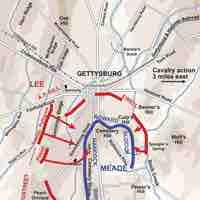
The Battle of Gettysburg resulted in the Confederate Army's retreat and the war turning in favor of the Union.
After winning a series of battles in the Chattanooga Campaign, the Union Army was able to invade the South.

General Grant's Union Army pursued General Lee's Confederate Army in the Overland Campaign, resulting in an important victory for the Union.
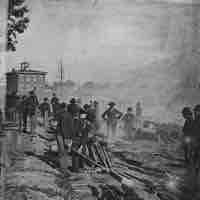
General Sherman's "March to the Sea" Campaign inflicted significant damage to Southern industry, infrastructure, and civilian property.
Robert E. Lee surrendered to Ulysses S. Grant at Appomattox on April 9, 1865, ending the fighting of the eastern theater and effectively ending the American Civil War.
After President Lincoln’s assassination, his wife Mary Todd Lincoln secured the first life pension for the widow of a president, and their son Robert rose to prominence as a lawyer and politician.

